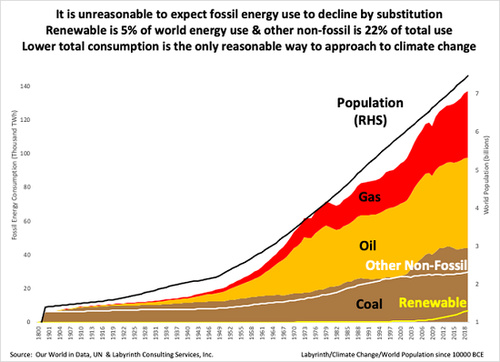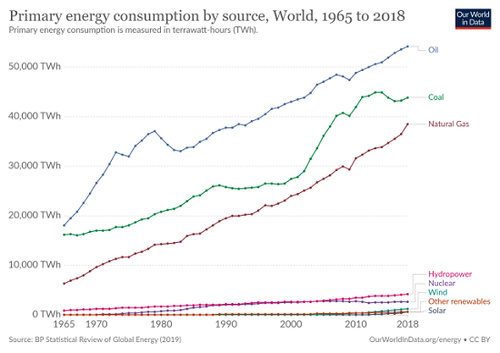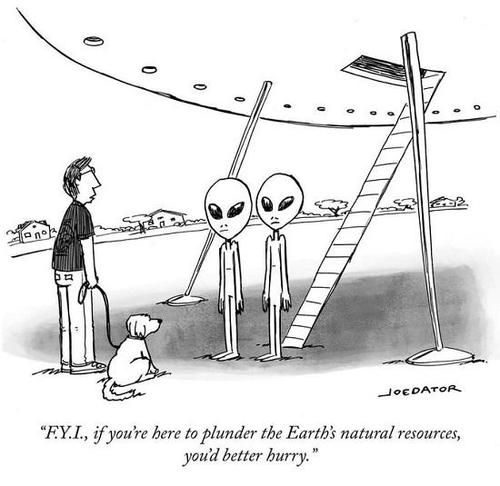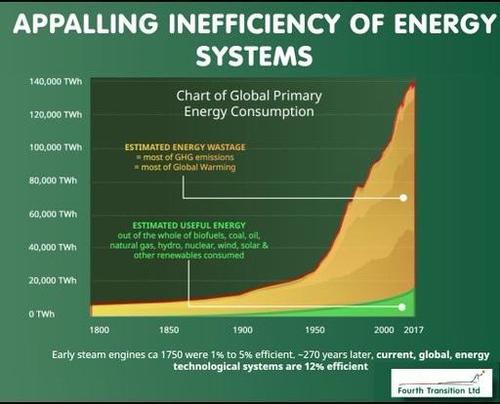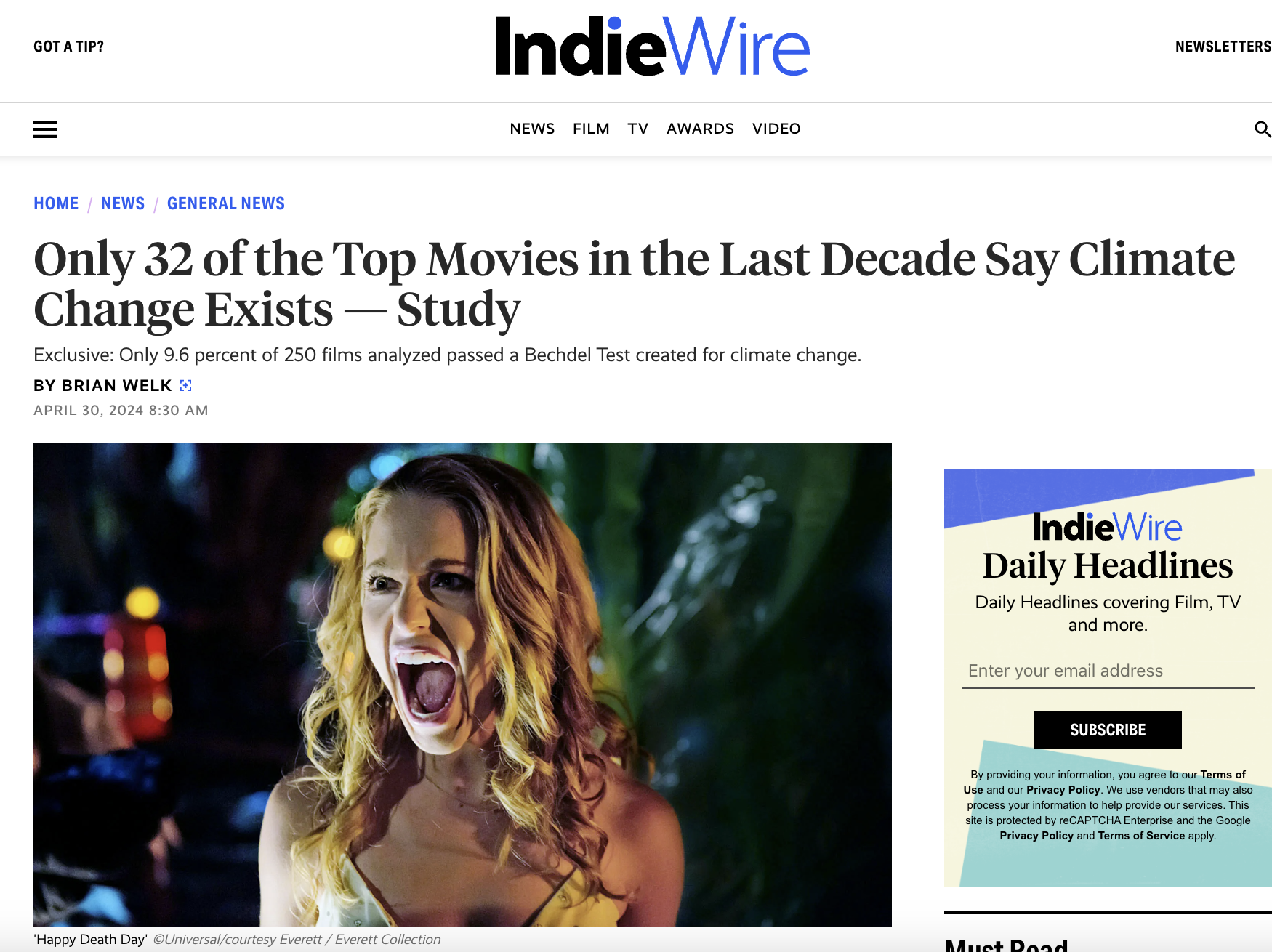https://www.zerohedge.com/energy/magical-thinking-about-green-energy
Authored by Charles Hugh Smith via OfTwoMinds blog,
The incentives must change from “waste is growth” to hyper-efficiency, conservation, right to repair and manufactured objects engineered to last a generation or longer and be recyclable at scale.
Humans like novelty but don’t like change. It’s easy to confuse the two. When we say, “I need a change,” what we mean is “I’d like to be refreshed by some novelty,” not “I want all the uncertainty, ambiguity and potential for errors and losses that come with change.”
Humans like a new model of truck (novelty) but don’t like their truck is taken away (change).
Since life is change, we all some experience with it. Some changes happen to us, others are the result of conscious choices we make.
Every individual has a mix of aptitudes, strategies and experiences with both kinds of change. Some of us are better at handling one kind or the other, some don’t handle either very well, some handle all change remarkably well.
Very few of us say, “I sure would like to have a health crisis.” We don’t choose the health crisis, but we do choose our response.
Like many of you, I’ve had accidents (health crises), major career changes and multiple moves to different locales.
as a general rule, changes we choose / direct have a push-pull aspect: there’s something negative we want to avoid or end, and something positive we want to obtain.
For example, we might realize that our current job is a dissatisfactory dead-end (the negative) and we need a more satisfying career (the positive).
A health crisis is negative but the prospect of this being a catalyst for a healthier lifestyle is positive.
Being fired or losing our job is negative (not the change we wanted or chose) but once we accept that our life is going to change one way or the other, we can view this negative as a positive catalyst– a move we didn’t choose for various reasons, but a positive move because otherwise we wouldn’t have taken all the risks and uncertainties that go with fashioning another career.
As a species, humanity is approaching the end of the past 200 year period of expansion of energy consumption. In the initial stages of this vast expansion, much of the new energy went into positive improvements: rural electrification, enormous leaps in food production and healthcare, and so on.
But beyond a certain point, energy and resources are being spent on consumption rather than investment, what I call “waste is growth:” once we set energy / resource consumption as the measure of prosperity, vehicles burning fuel in traffic jams, food that has been thrown out, half-empty aircraft and so on are viewed as positive “growth” because more fuel and resources were consumed.
Needless to say, waste is not growth, it’s squandering precious resources.
Humans habituate to new conditions with remarkable ease. Conditions that are initially horrific (Gulag prison camps, etc.) are soon just “everyday life.”
So humans have habituated to “waste is growth” and consider wasting energy and resources perfectly normal and desirable, as waste is more convenient than conservation and efficiency.
When humans are told 1) hydrocarbons are a limited resource that will soon become more expensive to extract and 2) burning hydrocarbons is ruining the biosphere we all depend on, few humans think “gosh, we should use much less energy.”
Instead, they think, “Let’s replace those 30 billion barrels of oil, the 30 billion (equivalent) barrels of natural gas and the 30 billion (equivalent) barrels of coal we burn every year with “green energy” that doesn’t pollute the biosphere with greenhouse gases and other negative consequences.”
Since humans don’t like change but they do like novelty, it’s very easy to anticipate electric-powered air-taxis (small helicopters), a billion all-electric vehicles, etc., all powered by “green” “renewable” energy sources such as wind turbines and solar panels.
The transition away from hydrocarbons won’t require any sacrifices or inconvenience, it will be a seamless transition from the petroleum-fueled vehicle to the electric vehicle, from gas-fired generators to solar/wind and batteries, and so on.
Everything in the new energy system will naturally be recyclable.
Unfortunately, the anticipated seamless transition to all renewable energy is magical thinking in virtually every way.
Renewables are not actually renewable, they wear out and must be replaced, so they are “replaceable” not “renewable.”
All these “replaceable” energy sources consume staggering amounts of minerals, metals and energy to be constructed, maintained, and replaced every 10 to 20 years. (The theoretical lifespan is claimed to be 30 years, but the real-world lifespan is consequentially less.)
Since all these “replaceable” energy sources are diffuse and intermittent, the energy they generate fluctuates across a wide range and must be concentrated to be stored /used in batteries or mechanical storage (reservoirs with hydro-powered generators, etc.) or chemical storage (converting electricity into hydrogen to be used as a fuel).
The billions of batteries required to store all this electrical energy must also be replaced every decade or so, and recycling batteries is difficult and costly. There is nothing remotely “green” about mining the planet for lithium, cobalt, etc. or manufacturing billions of batteries.
“Let’s Not Blow Up a Mountain and Call It Green”
As for recycling: a tiny percentage of the “replaceable” energy sources or batteries are being recycled because it’s too difficult and costly.
The scale required to replace 90 billion barrels of hydrocarbons with diffuse, intermittent energy sources and batteries is difficult to grasp.
Here is the reality:
“The annual output of Tesla’s Gigafactory, the world’s largest battery factory, could store three minutes’ worth of annual U.S. electricity demand. It would require 1,000 years of production to make enough batteries for two days’ worth of U.S. electricity demand. Meanwhile, 50–100 pounds of materials are mined, moved, and processed for every pound of battery produced.”
This report succinctly summarizes the physical limits of wind and solar efficiencies and the impossibility of replacing all hydrocarbons with energy sources that require millions of tons of minerals, metals, concrete, etc., are not recyclable and that must be replaced every generation. The “New Energy Economy”: An Exercise in Magical Thinking
This report summarizes why it’s impossible to obtain all the minerals/metals required: The Mining of Minerals and the Limits to Growth
The Delusion of Infinite Economic Growth: Even “sustainable” technologies such as electric vehicles and wind turbines face unbreachable physical limits and exact grave environmental costs.
If you prefer a video presentation, Nate Hagens compresses 15 years of research into 2 hours and 50 minutes: Earth and Humanity: Myth and Reality (2:50 hours)
There are many other resources that report the same physical realities: mining, smelting and transporting the millions of tons of materials required will be catastrophic for the environment, as it can only be accomplished by burning hydrocarbons and laying waste to the planet.
As for nuclear power: India has invested billions of dollars and years in trying to complete a full-scale thorium reactor, so far without success; to replace all hydrocarbon energy with nuclear-generated electricity ,the U.S. would have to bring a new reactor online every week for years. There hasn’t been a single new reactor built in decades, so this is the acme of magical thinking.
It’s much easier to sell change if it’s easy, convenient, cheap and doesn’t require sacrifices. But this is not how change works.
How change we don’t choose works is: “you had a heart attack and almost died. If you want to live longer than a few months, you’ll have to completely change your lifestyle, diet and fitness.”
Unfortunately, there is virtually nothing easy, convenient or cheap that doesn’t require sacrifices about changing your lifestyle from the ground up.
To make the necessary changes, we have to fashion a positive view and different incentives and goals: rather than put mouthfeel and taste above all else, we re-set the incentives to eating the healthiest foods in the tastiest ways. Rather than find excuses for not exercising, we find a form of exercise we like (or at least can tolerate) and that can be folded into a new habit.
We all understand the appeal of magical thinking: rather than go through all the hard work of remaking our lifestyle and daily habits, we put our faith in a “miracle diet” or equivalent.
Humanity’s resistance to needed change is understandable, but the irony is we quickly habituate to whatever changes force themselves on us.
That’s our choice with energy and the post-hydrocarbon era ahead. The incentives must change from “waste is growth” to hyper-efficiency, conservation, right to repair and manufactured objects engineered to last a generation or longer and be recyclable at scale.
If we can choose a positive vision and change our incentives and goals, we’ll look back and wonder why we clung so fiercely to magical thinking and “waste is growth.”
* * *

